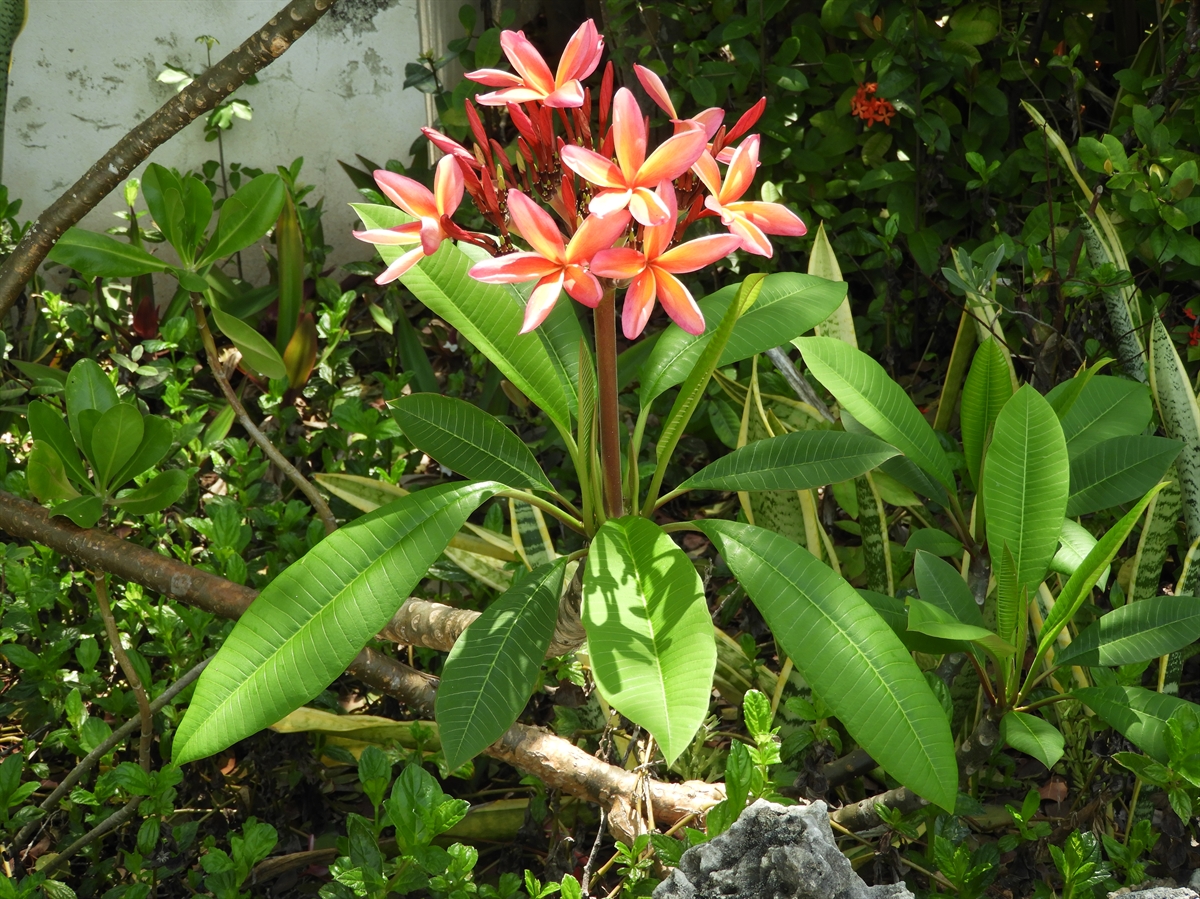Habit: Plumeria rubra grows as thin semi-succulent shrub up to 8 m in height. The leaves are arranged alternately, oblong to oblanceolate, to 25 cm long, 10 cm wide, and clustered at branch tips. The leaves have an obtuse to acuminate leaf apex and an entire margin. The abaxial leaf surface is pubescent. Vegetation produces a milky sap.
The complete, perfect, actinomorphic flowers are arranged in corymbose panicles arising in leaf axils. The calyx has 5 unfused, greenish sepals. The corolla has 5 red/pink/yellow petals that are fused forming a tube with the lobes overlapping at their base to one side forming a pinwheel shape. There are 5 stamens fused to the corolla tube. The ovary is superior and has two locules and many ovules. The fruit is a follicle (in pairs) that turns brown at maturity. The seeds have tufts of hairs at one end to assist in dispersal.
Habitat: Plumeria rubra grows in Human Altered environments (yards and gardens).
Distribution: Plumeria rubra is NOT native to the Lucayan Archipelago. It is native to Mexico, Central and northern South America. It is now common in many tropical and subtropical regions.
Medicinal/Cultural/Economic usage: Plumeria rubra is not known to be used medicinally in the Lucayan Archipelago.
It is a common ornamental species.
